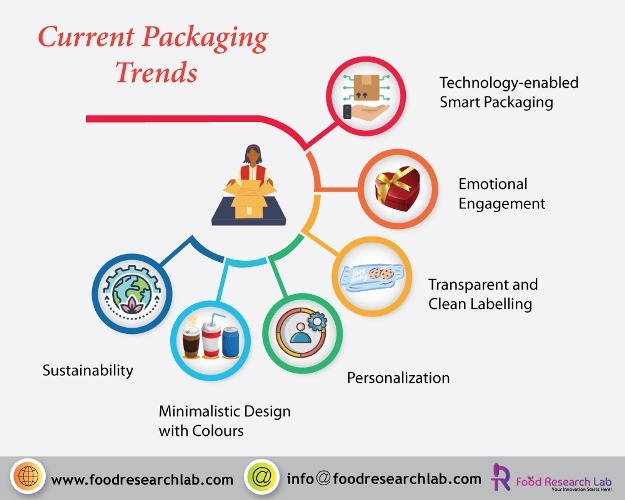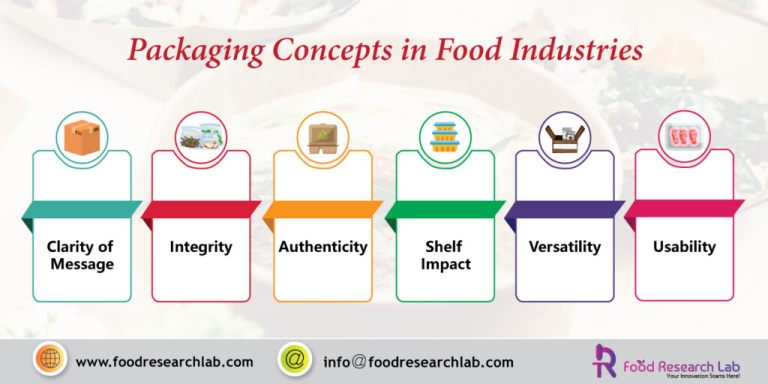Food packaging sells your product, extends its shelf life and aids in long-distance transportation. Finding the right type of packaging for your product will help your sales. Currently, if you visit a supermarket or a grocery store they carry almost more than 50,000 products. Consumers can pick one from 15 different options of cereals, chocolates soft drinks etc. For your product to stand out, a strong food packaging design should be implemented with powerful graphics. Food packaging aids and enhances convenience for consumers. Not only that, the right type of packaging will gain additional shelf life to your product if processed and packaged at optimal conditions. The right food packaging services should persuade consumers purchase on a shelf as well on a small screen while buying them online.
Trends and Concepts in Food Packing
Introduction
Food packaging sells your product, extends its shelf life and aids in long-distance transportation. Finding the right type of packaging for your product will help your sales. Currently, if you visit a supermarket or a grocery store they carry almost more than 50,000 products. Consumers can pick one from 15 different options of cereals, chocolates soft drinks etc. For your product to stand out, a strong food packaging design should be implemented with powerful graphics. Food packaging aids and enhances convenience for consumers. Not only that, the right type of packaging will gain additional shelf life to your product if processed and packaged at optimal conditions. The right food packaging services should persuade consumers purchase on a shelf as well on a small screen while buying them online.
Packaging concepts
Make sure your food product packaging checks under the following category. With these values in mind, designing a great food product becomes much easier. (1)
Clarity of message
Consumer buys essential products and would like to try a product if it catches their attention. Shoppers often make their decision in one-third of a second and they can become frustrated if the food packaging design makes it difficult to choose a product. Your product becomes successful when the end consumer can understand the brand, the product and the packaging design.
Integrity
So consumers have bought your product once, and for them to buy it again, they have to trust your brand which is based on the integrity of your intact product. A false expectation should not be created by using dramatically edited images that will not meet the consumer expectations.
Authenticity
Try to bring the common colours and material to suit your product. For instance, if your product is about natural foods, then choose earthen primary colours which will appeal better. Moreover, this authentic style of packaging should be consistent with your brand products. Research has shown colours can be effective to grab customers focus and attention. For instance, red, green, yellow and pink are the most eye-catching colours. This will aid in distinguishing your product from its competition. (2)
Shelf impact
Food retailers also think about food packaging and design which are displayed on the shelves to attract customers and this is called shelf impact. Product placement is done based on the product looks and patterns that they create. Products place next to a certain product can change the perception of consumers leading to both an increase or decrease in their sales.If your product looks like your competition there is a chance that your product could get blended and get lost in the crowd. However, if the packaging design standout it is more likely to get picked by the consumer.
Versatility
The food packaging design needs to be versatile and the key is to expand the product lines, which may be as simple as adding a new flavour. The best packaging design will be the one that is adaptable to the variety of products in your segment. For instance, show your customers what they can expect to find in the food package. The best template would be to use a consistent or colour.
Usability
Food packaging design not only needs to be attractive but also needs to convenient and usable. For instance, mayonnaise filled in squeeze jars is more usable compared to glass bottles. McDonald’s has launched a Mcbike package which allows cyclists to attach the packaging with burger, and chips on to the cycle bar. Dunkin Donut’s coffee cup is molded to carry sugar and cream with it. When the product becomes usable, it becomes appealing to consumers and increases the chances of buying again.(3)

Current packaging trends
- Technology-enabled smart packaging
This is pretty new and novel for most food development companies. Technology can now be used in the packaging to provide consumers with more information for security and confidence. For instance, QR codes and smart labels which when scanned using a smartphone provides information on temperature, pH, special ingredients, allergen if any, compliance with health standard etc. Companies such as Nestle’s Maggi soups used patented “granulation based technology’ to retain the freshness of its ingredients.

Emotional engagement
Consumers may also expect a story to a product. Emotional content is gaining popularity which then trends in social media with positive or negative sentiments. For instance company such as Paper Boar in association with tetrapak, incorporated the feeling of reminiscence in its packaging.
Another emotion most consumer would love is nostalgic value. Vintage-inspired designs evoke happy emotions in consumers reminding them of simpler times. This could be achieved by thinking about how a certain product would have been packed a decade ago. This concept would be appealing to the younger generation as well as they would have never experience that era.
Transparent and clean labelling
Recent studies on the packaging and consumer behaviours in 2020 have shown 38% of people are keen on buying products with clear information.
As explained in our previous blogs, consumers are well aware and conscious of what they eat. Manufacturers need to adapt to clear labelling to list the contents as it harder for people to read the fine print. This also indicates that the manufacturer is sticking to its promise of delivering healthy packaged product, upscaling the brand identity and integrity.
Personalization
Personalized packaging is gaining momentum as it plays a crucial part in attracting consumers. For instance, Coca-Cola, personalized printing names on the packaging which were initially only meant for gift orders on their online stores. An increase in production speeded up food packaging personalization making it a reality for everyone. (4)
Minimalistic design with colours
Minimalism is another new concept the younger generations can connect with. Manufacturers have shifted from flamboyant designs to adopt simplistic clear packaging. This also aids in highlighting the product’s value and keeps the costs low.
Having said that, consumers also love the colour, shape and design of the most attractive aspects of packaging. Using this information, manufacturers are using multiple areas of design, gradient colours, from logo to packaging to show a level of depth and intricacy.
Sustainability
Consumers are willing to pay extra to support green and sustainable packaging. The ecofriendly options have driven big multi-level corporations to ditch single-use plastics and provide biodegradable and recyclable packaging options. To add, single-use food cutlery is also switched for plant-based materials for improved sustainability.
Conclusion
The part of packaging in the customer journey has expanded beyond the shelf. Promising trends in the food product industries are highly influenced by the demand for clean, smart, convenient, and environmental solutions. It’s time to implement these new trends for your food products and move ahead. Food Research Lab is here to support Food packaging services to all the Food product development companies.

Let’s create something Innovative and Delicious together
Food Research Lab strives for excellence in new Food, Beverage and Nutraceutical Product Research and Development by offering cutting edge scientific analysis and expertise.




